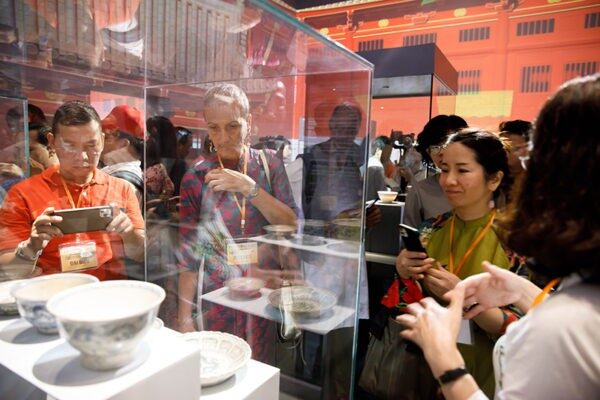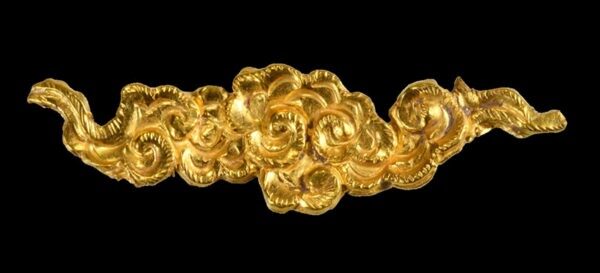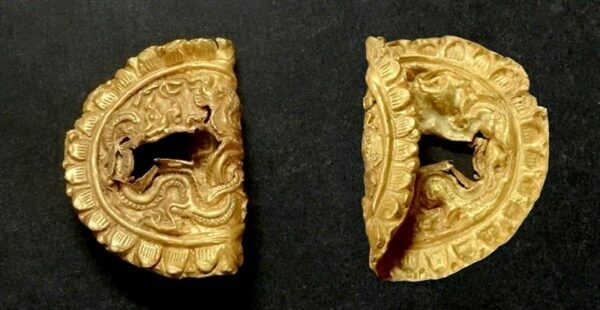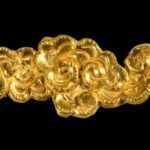
Exhibition area “Treasures of the Imperial Palace of Thang Long”
The discoveries of underground archeology at the relic site located at 18 Hoang Dieu in 2002-2004 revealed an extremely valuable relic complex, proving the existence and longevity over thousands of years of Thang Long – Hanoi. Scientists found a complex of architectural vestiges of the palace, the observatory of the Thang Long Imperial Palace and countless utensils of the dynasties. This important discovery vividly illustrated the long history of Thang Long Capital existing over 1300 years from the Dai La Dynasty (7th – 9th centuries), Dinh – Former Le Dynasties (10th century) to the Ly Dynasty (11th-13th century), Tran Dynasty (13th-14th century), Later Le Dynasty (15th-18th century). These are really the thousand-year treasures of Thang Long – Hanoi and also priceless assets of mankind. With exceptional global values, this relic site soon became a world cultural heritage in the autumn of 2010.
On the occasion of the 50th anniversary of the implementation of the Convention concerning Protection of World Cultural and Natural Heritage (1972-2022) and 20th anniversary of researching, preserving and promoting the value of Thang Long Imperial Citadel (since the breakthrough archeological discovery in 2002), Thang Long – Hanoi Heritage Conservation Center in collaboration with the Institute of Imperial Citadel Studies organized the exhibition “Treasures of the Imperial Palace of Thang Long” to introduce to the public the most typical and unique artifacts unearthed at Thang Long Imperial Citadel from 2002 to present.

Gold piece-decorated cloud, Tran Dynasty, 13-14 centuries (Source: Institute of Imperial Citadel Studies )
The exhibition consisted of three areas: exhibition area of artifacts from the Ly-Tran dynasties; Texhibition area of artifacts from the Former Le, Mac, and Le Trung Hung dynasties and the outer exhibition area highlighted with artifacts firstly introduced to the public, such as the Terracotta Pot with ever-largest size of the Tran Dynasty, Green Enamel Architectural Antiques in the former Le Dynasty.
The exhibition selected and introduced certain typical and unique types of ceramics in the Thang Long Imperial Palace. These were indispensable tools and items, which played a very important role in the life of the Royal Palace, from daily life to the banquets of the king and his court on great holidays such as the king’s birthday, coronation ceremony of the king, etc. In addition, many precious ceramics were also used as worship items in temples or used as interior decorations of palaces and observatory to adorn the beauty, nobility and luxury of the royal place.
In addition, the exhibition also introduced a number of precious metal relics such as jewelry, gold pieces decorated on utensils, objects, swords symbolizing the power of the court or the orders of the emperor which allowed imperial maids to leave the palace, etc.

Gold shirt button engraved with dragon, Tran Dynasty 13-14 centuries (source: HTTL)
The exhibition space was unique, more prominent with projected images of the Ly palace and the surrounding wall showing the beauty of the four seasons in the ancient palace. In particular, this was the first time 3D projection mapping technology was used to simulate the unique patterns of artifacts so that visitors could better recognize the beauty and elegance of the ceramics used in the Thang Long royal palace.
The exhibition was open to visitors from September 8, 2022 at House N19 – Thang Long Imperial Citadel (19C Hoang Dieu, Ba Dinh, Hanoi)
H.T

